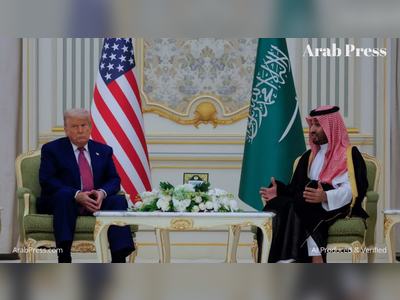Crown Prince Mohammed bin Salman Arrives in Washington to Reset U.S.–Saudi Strategic Alliance
First U.S. visit since 2018, the meeting with President Donald Trump centres on defence, artificial intelligence and nuclear cooperation
Crown Prince Mohammed bin Salman of Saudi Arabia has travelled to Washington for a high-level working visit with President Donald Trump, marking his first trip to the United States since 2018. The meeting highlights the longstanding U.S.–Saudi strategic partnership and signals a major step in the kingdom’s repositioning on the global stage.
The agenda places defence cooperation at its core.
U.S. and Saudi officials confirm negotiations are nearing completion on a broad security pact that would elevate Riyadh’s protection status with Washington, similar in scope to the pact signed with Qatar earlier this year.
The discussions also encompass advanced military hardware, deeper intelligence integration and edge-cloud artificial intelligence initiatives.
On the technology front, Saudi Arabia is pressing for access to U.S. AI platforms and semiconductor exports—elements that sit at the heart of its Vision 2030 economic transformation.
The kingdom seeks to diversify away from hydrocarbons and to establish itself as a regional hub for innovation, while the United States views the partnership as central to countering emerging global technological and security competitors.
Meanwhile, the civilian nuclear agenda is making a comeback.
Saudi officials hope to advance a framework for U.S. nuclear-energy cooperation, including potential technology transfers and joint projects.
While earlier efforts stalled amid regional diplomacy and Israeli pledge linkage, the current visit seems designed to decouple nuclear cooperation from prior negotiation gridlocks.
This visit also carries profound symbolic weight.
It represents the crown prince’s attempt to rehabilitate his international standing following the 2018 killing of journalist Jamal Khashoggi—a case that once froze ties and triggered worldwide censure.
His presence in Washington underscores how the U.S. under President Trump is prioritising strategic interest, economic ties and regional stability over past ruptures.
For Washington, the visit renews the transactional framework that has defined U.S.–Saudi bilateral relations: energy and investment in exchange for security and technology.
With President Trump seeking to deliver legacy-defining diplomacy in the Middle East, the kingdom’s cooperation underpins that ambition.
As the two sides prepare to formalise key outcomes, the lasting test will be implementation and follow-through.
But for now, the visit puts the U.S.–Saudi axis back at the centre of Middle East geopolitics.
The agenda places defence cooperation at its core.
U.S. and Saudi officials confirm negotiations are nearing completion on a broad security pact that would elevate Riyadh’s protection status with Washington, similar in scope to the pact signed with Qatar earlier this year.
The discussions also encompass advanced military hardware, deeper intelligence integration and edge-cloud artificial intelligence initiatives.
On the technology front, Saudi Arabia is pressing for access to U.S. AI platforms and semiconductor exports—elements that sit at the heart of its Vision 2030 economic transformation.
The kingdom seeks to diversify away from hydrocarbons and to establish itself as a regional hub for innovation, while the United States views the partnership as central to countering emerging global technological and security competitors.
Meanwhile, the civilian nuclear agenda is making a comeback.
Saudi officials hope to advance a framework for U.S. nuclear-energy cooperation, including potential technology transfers and joint projects.
While earlier efforts stalled amid regional diplomacy and Israeli pledge linkage, the current visit seems designed to decouple nuclear cooperation from prior negotiation gridlocks.
This visit also carries profound symbolic weight.
It represents the crown prince’s attempt to rehabilitate his international standing following the 2018 killing of journalist Jamal Khashoggi—a case that once froze ties and triggered worldwide censure.
His presence in Washington underscores how the U.S. under President Trump is prioritising strategic interest, economic ties and regional stability over past ruptures.
For Washington, the visit renews the transactional framework that has defined U.S.–Saudi bilateral relations: energy and investment in exchange for security and technology.
With President Trump seeking to deliver legacy-defining diplomacy in the Middle East, the kingdom’s cooperation underpins that ambition.
As the two sides prepare to formalise key outcomes, the lasting test will be implementation and follow-through.
But for now, the visit puts the U.S.–Saudi axis back at the centre of Middle East geopolitics.







